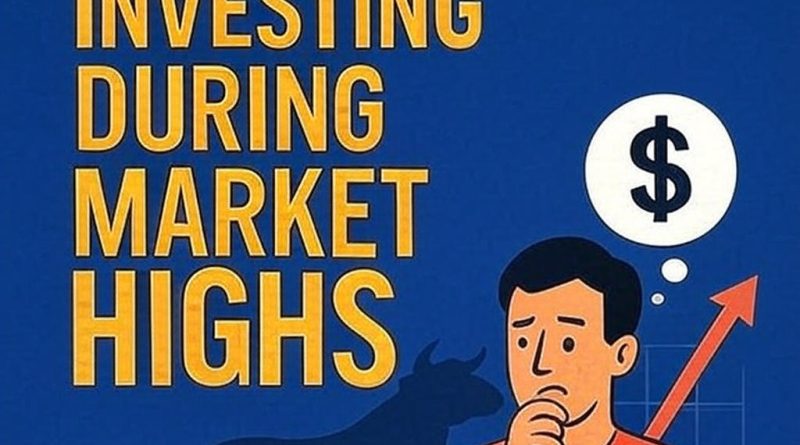How to Avoid FOMO Investing During Market Highs
When the stock market is soaring and everyone seems to be making money, it’s easy to feel like you’re missing out. This feeling, known as FOMO (Fear of Missing Out), can drive even seasoned investors to make rash, emotionally charged decisions. Buying into a market peak can lead to overvalued positions and painful losses when momentum fades. To invest wisely during market highs, it’s essential to understand what FOMO investing is, why it’s dangerous, and how to control it through discipline, strategy, and mindset.
1. What Is FOMO Investing?
FOMO investing happens when investors buy into assets simply because prices are rising or because others are profiting. It’s an emotional response to market euphoria, often driven by social media, news headlines, and peer pressure. You’ve likely seen it play out before: everyone starts talking about a hot stock, a booming sector, or a trending cryptocurrency. The excitement builds, and it feels like the only way to keep up is to buy in before it’s “too late.”
Unfortunately, this mindset often leads to buying at the top of the market cycle. When the hype cools off, those same investors are left holding positions that quickly lose value. The emotional highs of FOMO are followed by frustration, regret, and in some cases, panic selling.
2. Why FOMO Is Dangerous for Investors
FOMO investing undermines the very principles of sound investing—discipline, patience, and rational decision-making. It replaces strategy with speculation and emotion.
Here’s why it’s so risky:
- Buying high: FOMO-driven investors often enter at inflated prices, setting themselves up for losses when prices normalize.
- Neglecting fundamentals: Emotional investors focus on price action instead of company performance, valuation, or long-term potential.
- Short-term mindset: Chasing quick gains can lead to frequent trading, higher transaction costs, and tax implications.
- Emotional volatility: The cycle of excitement and regret can create bad habits that repeat over time.
History offers plenty of reminders, like the dot-com bubble or the crypto mania of 2021—of how collective FOMO can inflate prices far beyond reasonable valuations before a sharp correction brings markets back to reality.
3. How to Recognize FOMO Triggers
Avoiding FOMO begins with awareness. Recognize what triggers the urge to buy impulsively:
- Social media hype: Platforms like X (formerly Twitter), Reddit, and TikTok amplify success stories while rarely showing losses.
- News headlines: Sensational financial news often overstates trends, making it seem like everyone is getting rich overnight.
- Peer pressure: Friends or coworkers bragging about profits can make you feel left behind, even if their risk tolerance differs from yours.
- Market momentum: Seeing rapid gains in an index or stock can create a false sense of urgency—“If I don’t buy now, I’ll miss it.”
Understanding your emotional triggers helps you stay grounded and make rational choices instead of reactive ones.
4. Practical Strategies to Avoid FOMO Investing
Avoiding FOMO doesn’t mean avoiding investing altogether, it means approaching the market with discipline and purpose. Here are some proven strategies:
A. Stick to a Long-Term Plan
Create an investment plan with clear goals, risk tolerance, and time horizon. If your decisions align with your strategy, short-term noise won’t sway you as easily.
B. Automate Your Investing
Using tools like dollar-cost averaging (DCA) allows you to invest a fixed amount regularly, regardless of market conditions. This reduces the emotional impact of market highs and lows.
C. Diversify Across Sectors
Don’t chase one trending sector or stock. Instead, build a balanced portfolio that includes a mix of stocks, ETFs, bonds, and cash to spread risk.
D. Revisit Fundamentals
Before buying any stock, ask: “Is this company’s growth supported by earnings, innovation, or just hype?” Reviewing fundamentals helps filter out noise from excitement.
E. Limit Exposure to Market Noise
If financial news and social media increase your anxiety or temptation to buy impulsively, consider taking breaks from them. Information overload often fuels emotional decisions.
F. Keep Cash on Hand
Having liquidity available allows you to buy quality stocks when markets eventually cool off—turning patience into opportunity.
5. Learn from History and Experience
Markets move in cycles, what goes up eventually cools down. Even during the strongest bull runs, corrections are inevitable. Investors who avoided the temptation to chase gains during the 2020–2021 tech surge and waited for pullbacks were able to buy better companies at fairer prices later.
History shows that disciplined investors outperform emotional traders over time. Avoiding FOMO doesn’t mean missing out, it means waiting for better opportunities and protecting your capital for when the odds are truly in your favor.
6. Building the Right Mindset
Investing successfully requires emotional resilience. Focus on your goals, not what others are doing. Wealth building is a marathon, not a sprint.
Instead of worrying about missing a rally, remind yourself that the market always creates new opportunities. Whether it’s the next earnings season, a sector rotation, or an innovation boom, there will always be another chance to invest wisely, without the panic of chasing hype.
Conclusion
FOMO investing can be one of the most dangerous emotional traps for investors, especially during market highs. The urge to “get in now” often leads to regret later. By staying disciplined, sticking to a plan, and avoiding emotional reactions to market trends, you can protect your wealth and make smarter investment choices.
Remember, patience and preparation always outperform panic and impulse.
